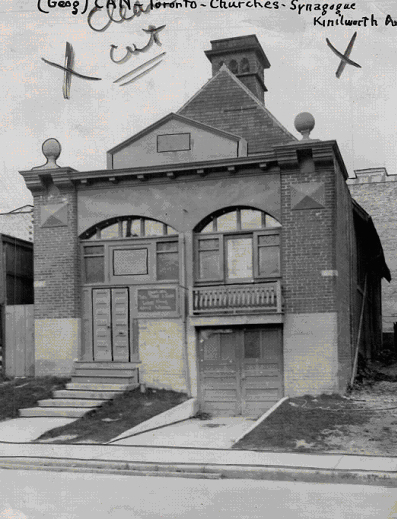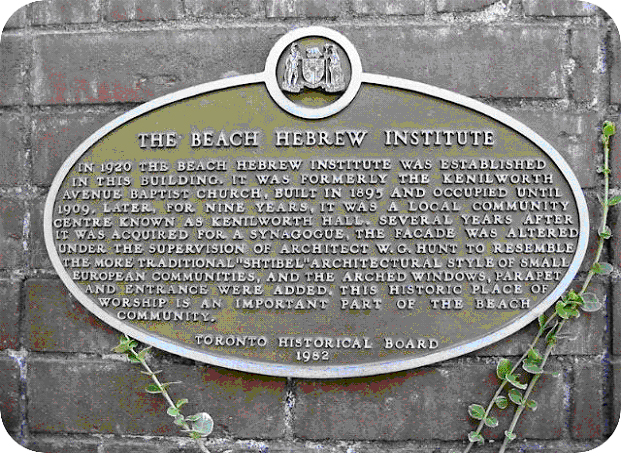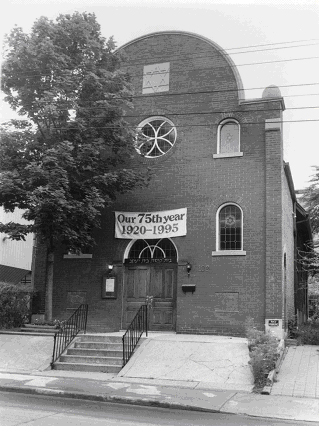Early picture of Beach Hebrew Institute discovered!
by Jean Cochrane May 2018
This historic Beach picture has surfaced thanks to Barbara Myrvold's research in Toronto Public Library's Digital Archive. It was published in the Toronto Star on November 20, 1919, and shows the building shortly after it was purchased by the neighborhood's Jewish congregation. The sign to the right of the double doors appears to read: "Tues, Thurs & Sat, L. [Gaven or Caven], Apply within." The tower at the top of the picture is the old church steeple, minus its peak, from the days when Kenilworth Avenue Baptist Church was the owner. The brick structure visible behind the proposed synagogue is part of Allen Beach Theatre, which opened on the south side of Queen Street East between Kenilworth Avenue and Waverley Road on December 15, 1919; it is now the Beach Mall.
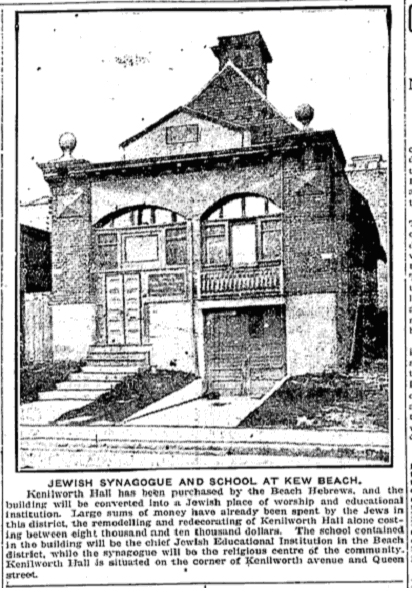
"Jewish synagogue and school at Kew Beach," Toronto Star, November 20, 1919, page 8.
The building had started life in 1895 as the Kenilworth Avenue Baptist Church. It was designed by J. Francis Brown, an architect who planned many Baptist churches in Ontario. Shown below are the church in its original location on Queen Street East at the southeast corner of Kenilworth Avenue and the old manse, which still stands on the east side of Kenilworth Avenue, immediately south of the synagogue.
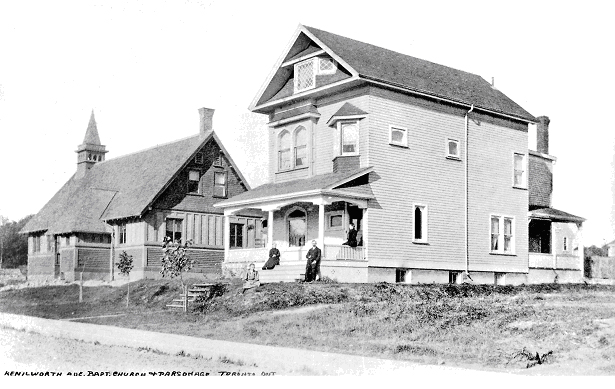
Kenilworth Avenue Baptist Church and Parsonage, early 1900s
Courtesy Waverley Road Baptist Church/Beach and East Toronto Historical Society
By 1908, the Baptists had out grown their first church, and had moved to the east side of Waverley Road, north of Queen. Their original building stood empty for two years, then was used as a warehouse until 1910 when it became Kenilworth Hall, a community centre for events that included meetings and dances. That was probably the period when it was moved south and turned to face west on Kenilworth Avenue.
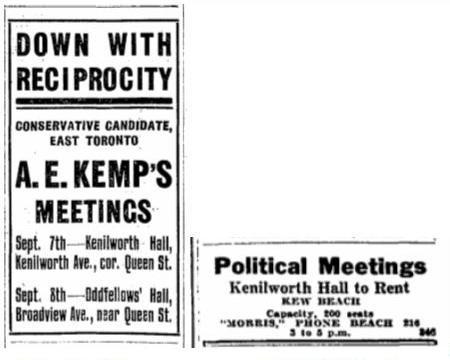
September 7, 1911, page 2 October 9, 1919, page 2
The Beach's Jewish citizens, who had been meeting in 1919 to discuss starting a neighborhood synagogue, raised donations from about 26 families, and with that and two mortgages they bought the property for $6,000. At the time there were about 40 Jewish families in the area.
It was first called Beth Jacob in Hebrew and the Beach Hebrew Institute in English.
A history from the Ontario Jewish Archives says, "Due to the lack of Jews in the area as well as the anti-Semitic atmosphere at some points, the congregation tended to rely on the English name for the shul."
In 1924 to 1926 the congregation raised funds again to do repairs and renovations to accommodate a busy congregation. Designed by local architect William George Hunt (1855-1927), (See also: Biographical Dictionary of Canadian Architects) the changes included increased space for Hebrew classes and Sunday school in the upstairs gallery, the addition of stained glass windows, and the creation of a new front facade.
Over the decades, the congregation fluctuated, in part because some of the families joined the Jewish exodus to the northwest part of the city. There even came to be pressure to close the synagogue. Then in the 1970s as new Jewish families move into the neighborhood, a restoration campaign was started, reaching out to Jewish households all over the city.
Local support included the East Toronto and Beaches Historical Society which helped to raise awareness of the synagogue. It is one of the oldest in the city and a Toronto Historical Board plaque was ceremoniously unveiled in 1982 by then Mayor Art Eggleton.
The funds raised made possible serious repairs and renovations. The building was designated under the Ontario Heritage Act in 1986.
Histories of the congregation were published during its 60th anniversary, Beach Hebrew Institute, 1920-1980, and its 75th year, which was announced with a banner across the front facade of the synagogue.
.The synagogue continues to be an active part of the Jewish community and the neighborhood. Plans are underway to celebrate the 100th anniversary in 2020.



